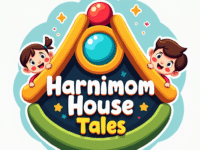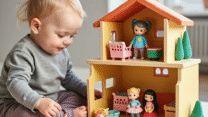
Books That Help Toddlers Name Their Feelings (Ages 1–3)
Turn tears into words and confusion into calm with these gentle emotion-focused storybooks.
Why Naming Emotions Matters in Toddlerhood

Toddlers feel everything BIG.
One minute they’re giggling at a peekaboo game. The next? They’re flopped on the floor in a puddle of tears because their banana broke in half.
This rollercoaster of emotions might feel wild (and exhausting), but it’s completely normal. These aren’t “bad” behaviors—they’re signals of emotional overwhelm. Toddlers aren’t trying to be difficult. They’re simply navigating huge feelings with tiny tools.
At this age, they don’t yet have the vocabulary or self-regulation skills to say,
“I’m frustrated that my tower fell.”
or
“I’m sad because I wanted to open the snack myself.”
So instead, they show us what they feel through behaviors like:
- Tantrums
- Clinginess
- Hitting, biting, or throwing
- Screaming or refusing to cooperate
As parents and caregivers, it’s our job not just to react—but to understand. To guide them, gently and consistently, toward recognizing and naming their feelings.
That’s Where Emotion-Centered Books Make a Huge Difference
Reading stories about feelings gives toddlers a safe, predictable space to explore emotions. Through relatable characters and simple language, toddlers begin to learn:
- That feelings like anger, sadness, or frustration are not “bad”
- That every feeling has a name
- That there are ways to calm down, ask for help, and feel better
Whether it’s a bunny who feels mad when it’s time to clean up, or a bear who learns to take deep breaths when he misses his mom—these books become emotional mirrors.
They help toddlers realize:
“Oh, I’ve felt like that too.”
“It’s okay to feel big things—and I can learn how to handle them.”
1. “Milo Feels Mad”
Emotion focus: anger, disappointment
When Milo doesn’t get what he wants, his chest feels hot and his hands clench. Mama helps him pause, breathe, and cool off.
Bonus: Comes with printable breathing cards!
Get the Calm & Kindness Bundle
2. “Zara Counts to Calm”
Emotion focus: frustration, impulse control
Zara wants the big blue truck—but someone else is playing with it. She learns to count and breathe while she waits her turn.
Toddler-sized mindfulness in a story format.
Tips to Use Emotion Books Effectively
1. Read When Everyone Is Calm
Books work best when your toddler is in a receptive mood. Don’t wait for a tantrum.
2. Use Their Language Level
Say, “You feel mad like Milo?” instead of complex sentences. Match their vocabulary.
3. Act It Out Together
After reading, ask: “Can we make a sad face like Ellie? A happy face like Zara?”
4. Print and Post Emotion Charts
Visuals reinforce learning. Try a free one from our shop:
Free Feelings Chart Download
What I Noticed After Using These Books With My Toddler
The first time my daughter said, “I feel mad,” instead of throwing her puzzle across the room, I nearly cried. She was only two and a half. But she’d been hearing that phrase in Milo Feels Mad for weeks.
Books helped her find the words when she needed them most.
She still had big feelings. But now, she was learning what they were called, and that she could handle them.
Give Your Toddler the Gift of Language for Their Feelings
You don’t need to lecture or over-explain. Just sit with them, book in hand, and read.
These gentle stories can:
- Prevent tantrums before they start
- Create emotional literacy early
- Bring calm and connection to your daily routine
You’re not just teaching them words—you’re helping them feel seen.













